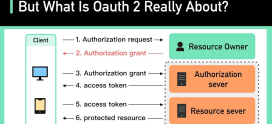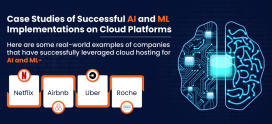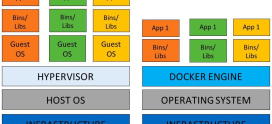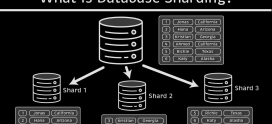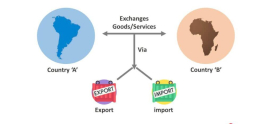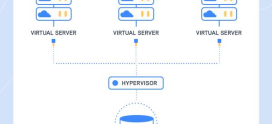
The Rise of Automated Database Indexing
Have you ever found yourself staring at a tangled web of data, perhaps feeling overwhelmed or confused about how to find exactly what you need? You’re not alone! In today’s digital world, databases hold vast amounts of information, and without proper organization, finding specific data can feel like searching for a needle in a haystack. But what if there was a way to simplify this process? Enter automated database indexing – a technological wonder that’s transforming the way we access information.
Many people struggle with the complexities of data management in both personal and professional contexts. Whether you’re a small business owner wrestling with customer records or a student trying to organize research, the right indexing can mean the difference between frustration and efficiency. Thankfully, with automated database indexing on the rise, the hurdles of accessing and organizing these troves of data are slowly disappearing. Follow me as we explore this exciting frontier of technology, revealing insights, practical applications, and hopefully a clearer path through the data jungle.
What is Automated Database Indexing?
At its core, automated database indexing is a process that organizes and categorizes data in databases with minimal human intervention. Think of it as a digital librarian, tirelessly cataloging books so you can easily find the one you need without searching for hours. When you use automated indexing, the system intelligently identifies patterns, categorizes data, and prioritizes access, enhancing the speed and efficiency of information retrieval.
Why is Indexing Important?
The Efficiency Factor
Imagine walking into a library where all the books are piled up randomly. Sounds chaotic, right? That’s similar to how a poorly indexed database functions. Efficient indexing ensures that data retrieval is quick, allowing users to save time and energy.
Improved Performance
When databases are properly indexed, the speed at which information is retrieved significantly increases. This is akin to having a map on a treasure hunt; knowing where X marks the spot can lead you directly to your goal.
Scalability
As data grows, so does the complexity of search queries. Automated indexing allows databases to scale without losing performance. This adaptability is crucial for businesses and organizations that generate increasing amounts of data.
How Does Automated Database Indexing Work?
The mechanics of automated indexing can be mind-boggling, but don’t worry—I’ll break it down. Automated systems analyze data patterns and user queries, using algorithms to decide the best way to arrange data. When new data is added, the indexing system updates itself, maintaining order and ensuring that the latest information is readily accessible.
Real-World Applications of Automated Indexing
Now, let’s look at some real-world applications of automated database indexing and how it benefits various industries.
Healthcare
In healthcare, patient records are immense and varied. Automated indexing allows for quicker retrieval of crucial data, enabling healthcare professionals to deliver better patient care efficiently.
E-commerce
For e-commerce platforms like DarazHost, automated indexing enhances the customer experience by ensuring that product searches yield fast and relevant results. This convenience can directly influence sales and user satisfaction.
Financial Services
The finance industry deals with enormous amounts of sensitive data. Automated indexing provides the necessary security and speed for managing records, facilitating quick audits, and improving compliance capabilities.
Challenges Nevertheless Exist
While automated database indexing offers promising solutions, it’s not without its challenges. Transitioning from manual to automated systems can involve hefty upfront costs and require a certain level of technical expertise. Regular maintenance of indexing systems is also vital to ensure efficiency over time.
Expert Insights on Industry Trends
According to Dr. Maria Thompson, a data management specialist at a leading tech firm, “The future of data management relies on automation and AI. Businesses that adopt automated indexing will position themselves for success as data continues to accumulate exponentially.” This highlights the reality that staying ahead of the curve in data management is becoming increasingly important.
Case Study: Transforming Business with Automated Indexing
Let’s take a look at a case study involving a medium-sized retail company that decided to implement automated database indexing. Prior to the change, employees spent hours each week searching for inventory data, which subsequently impacted their overall productivity. After adopting a robust automated indexing solution, the company reported a 40% reduction in data retrieval time, resulting in a notable increase in employee efficiency and job satisfaction.
The Future of Automated Database Indexing
As technology continues to evolve, so too will automated database indexing. We can expect even more sophisticated algorithms, machine learning capabilities, and better integration with other technologies. The benefits are clear: as automation advances, so will our ability to manage, process, and analyze data seamlessly.
FAQs
What types of databases benefit the most from automated indexing?
Relational databases and NoSQL databases both benefit significantly from automated indexing, allowing for streamlined search and retrieval processes.
Can small businesses use automated indexing?
Absolutely! Automated indexing solutions can be tailored for businesses of all sizes, helping enhance efficiency even for small operations.
How often should databases be indexed?
This often depends on how frequently data is added or accessed. In active environments, daily or weekly indexing might be necessary, while more static databases could require less frequent updates.
What impact does automated indexing have on security?
Automated indexing enhances data security by maintaining well-structured databases, which reduce vulnerabilities and improve compliance with data regulations.
Is manual indexing completely obsolete?
While automated indexing greatly streamlines the process, some niche applications may still warrant manual indexing for specific organizational goals.
Conclusion
In a world where information is abundant and often overwhelming, automated database indexing shines as a beacon of order and efficiency. For individuals and organizations alike, it promises to simplify our relationship with data, providing timely access to relevant information—when we need it most. As this technology continues to evolve, embracing automated indexing could very well be the key to turning data chaos into data advantage. So, why not explore the possibilities today and witness the transformative power of automated indexing firsthand?

